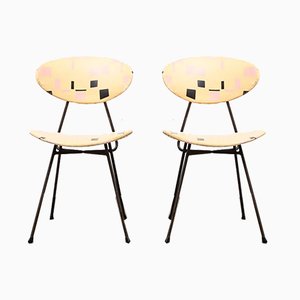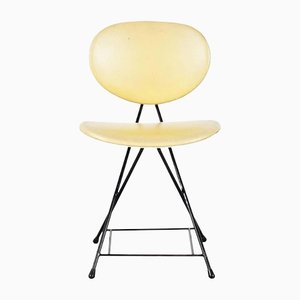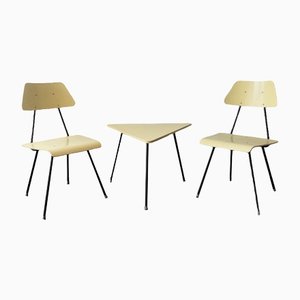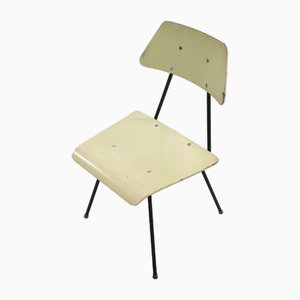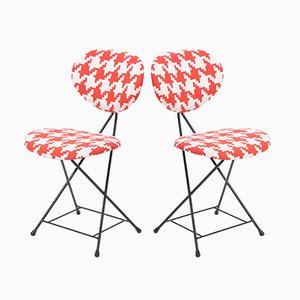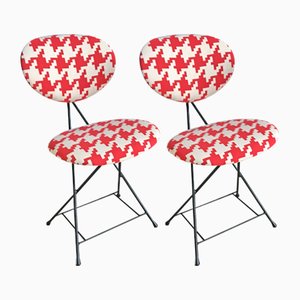
Born in The Hague in 1925, Dutch designer Rob Parry is celebrated for his ingenious use of new techniques and materials. His wide range of work spanned industrial design, typography, interior design, and architecture.
Parry studied at The Hague’s Royal Academy of Art under esteemed architect-designers Cor Alons (1892-967), Paul Schuitema (1897-1973), and Gerrit Rietveld (1888-1964). Parry later worked in Rietveld’s firm.
In 1950, Parry established his own firm, but from 1954 until 1958, he collaborated with Dutch designer Emile Truijen (1928-2003). Although this partnership was short-lived, the duo developed numerous designs together, including their iconic, red and grey double mailbox (1957) for the Dutch Postal Service (PTT). This ergonomic design was made partially from plastic and featured two boxes that separated local and national mail. The first of its kind, it was awarded a silver medal at Milan’s Triennale that same year and was widely used in the Netherlands until 2006.
During the 1950s, Parry also designed for the Dutch furniture manufactory Gederland. The innovative and functionalist 1611 Chair (1952)—particularly popular thanks to its detachable cushions and easy-to-clean, removable covers—was sold more than 60,000 times. Another successful design for Gederland was Parry’s Lotus Armchair (1950s), which offered a modern combination of materials.
Parry continued to design interiors, furniture, stands, exhibitions, jewelry, lettering, and toys until 1995. He lectured at Willem de Kooning Academy in Rotterdam for thirty years. Parry’s midcentury designs are not well known today, because most were created for special projects and were never serially produced. Examples include a Plexiglas dining chair (1947) molded in the form of the human body, a magazine rack made from a single sheet of bent aluminum (1947), an armchair with an adjustable back (1950), and a multi-functional, shifting piece of furniture that functioned as an armchair, sofa, and bed all-in-one (1959). Parry’s characteristically postwar Dutch work tends toward strong lines and simple silhouettes and can be found in the collections of the Stedelijk Museum in Amsterdam, Boijmans Van Beuningen Museum in Rotterdam, the Museum for Communication in The Hague, and the Stedelijk Museum in ’s-Hertogenbosch. In 2006, Rotterdam’s VIVID Gallery presented a retrospective exhibition of Parry’s work.
For more information about Parry, see Hans Ibelings’ monograph Rob Parry (2015).
Images courtesy of Rob Parry

